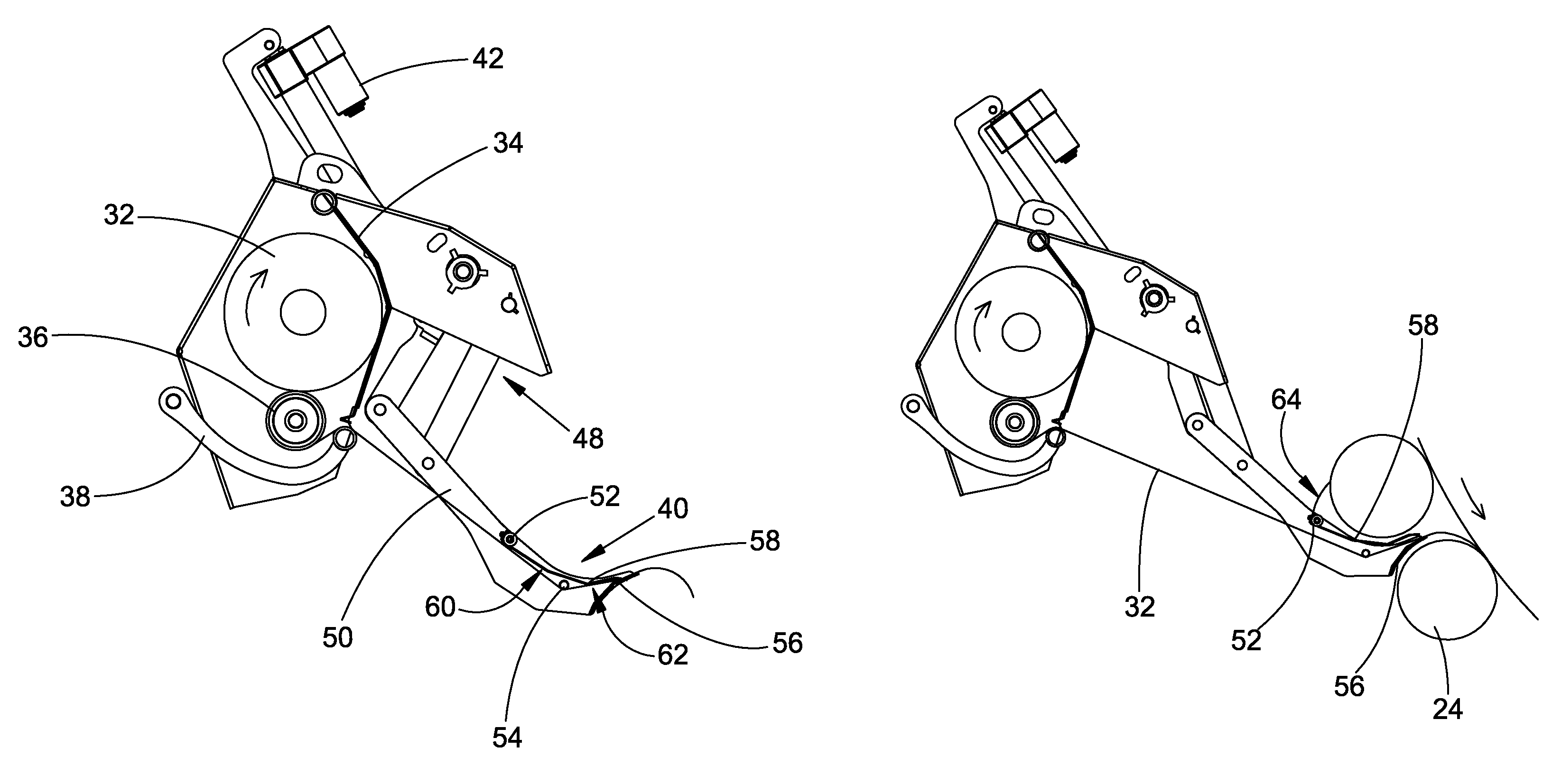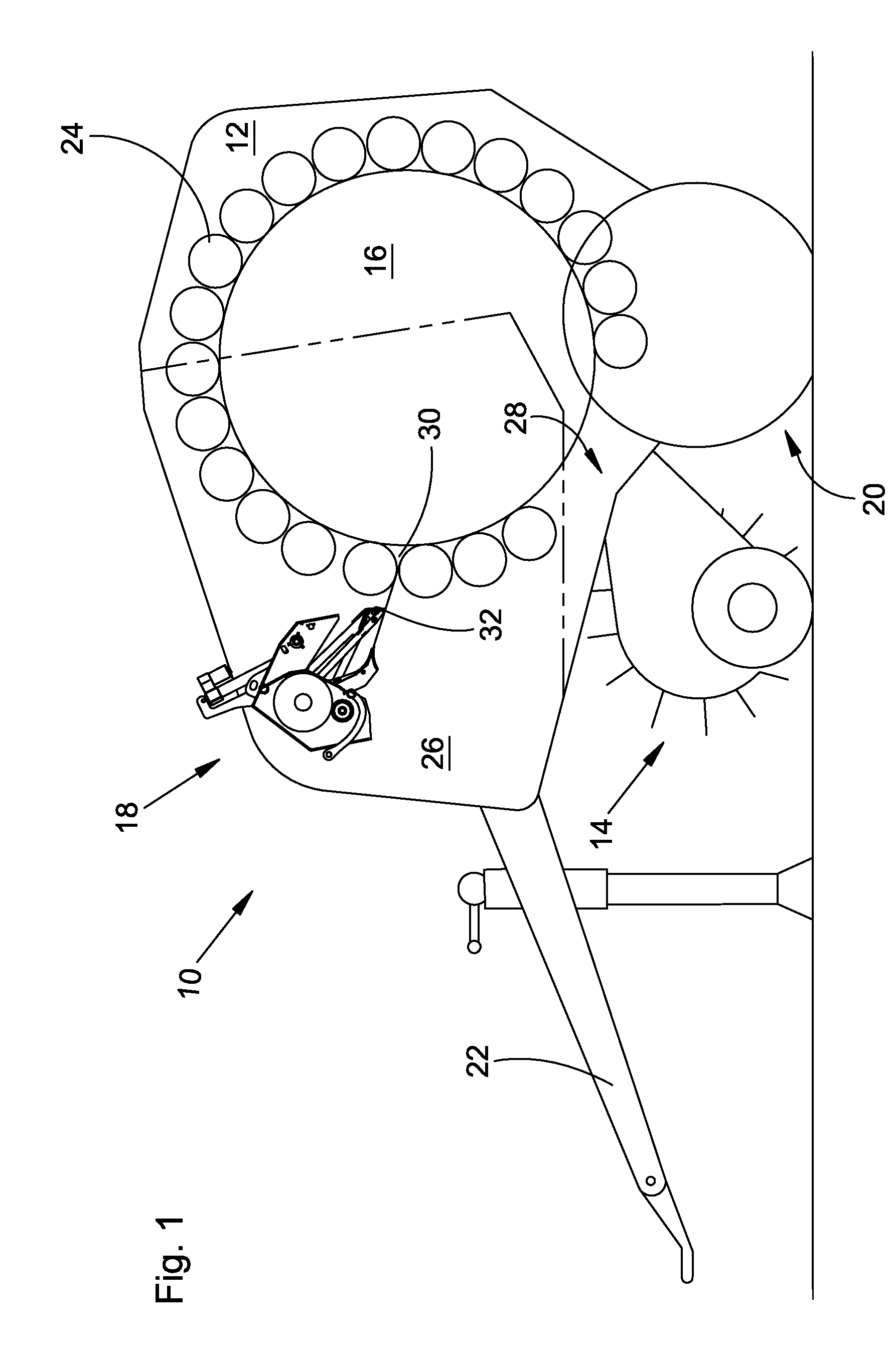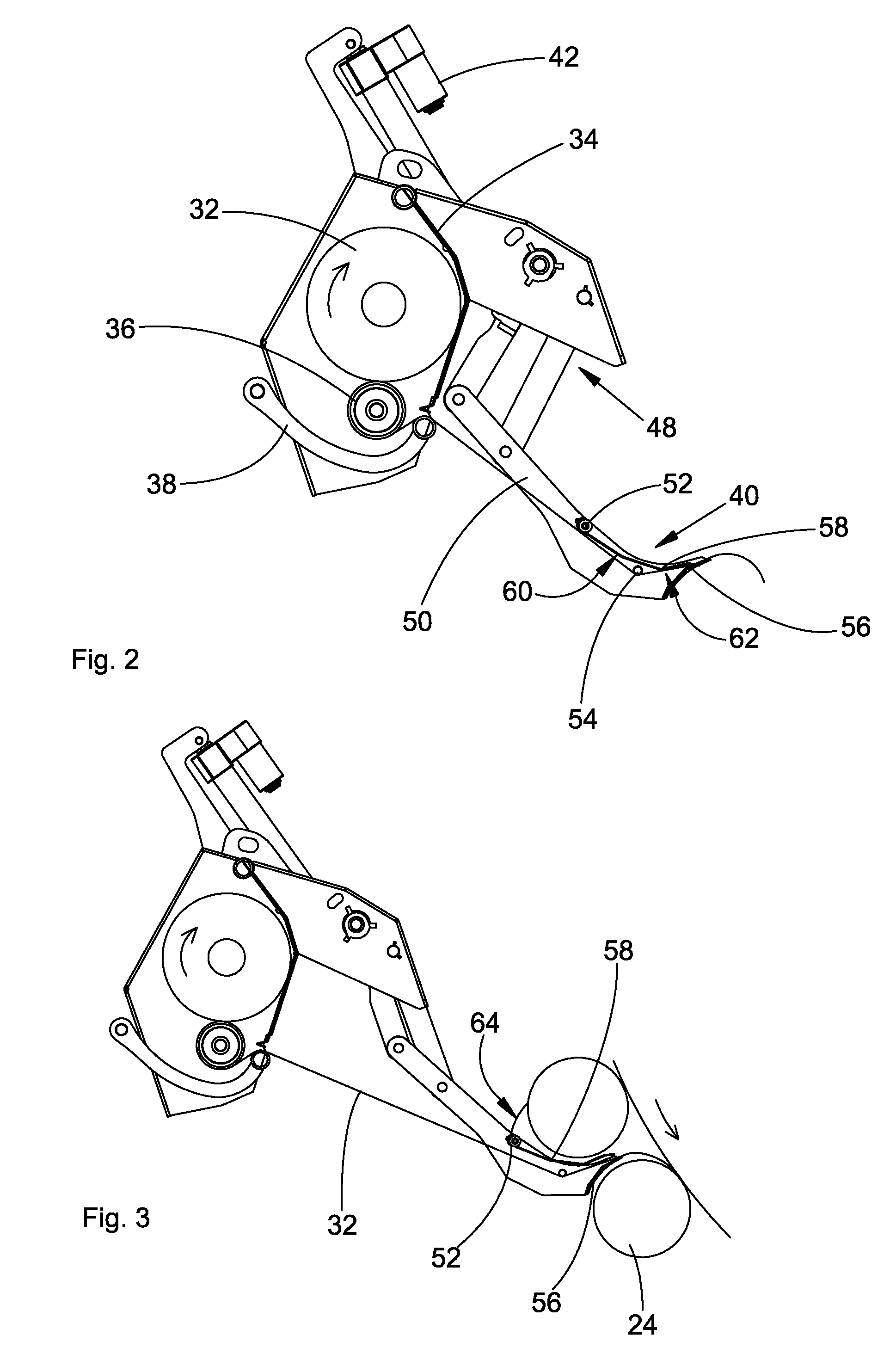Web wrap device
a technology of web wrapping and web, applied in the field of web wrapping devices, can solve problems such as unreliability of these systems, and achieve the effect of improving the operation of the web wrapping
- Summary
- Abstract
- Description
- Claims
- Application Information
AI Technical Summary
Benefits of technology
Problems solved by technology
Method used
Image
Examples
Embodiment Construction
[0027]With reference now to the drawings it can be seen that FIG. 1 shows a round baler 10, which has a chassis 12, a pick-up 14, a bale chamber 16, a web wrap device 18, an axle with wheels 20, a tongue 22 and pressing means 24.
[0028]The round baler 10 is of an ordinary fixed chamber design, but could, alternatively, be a variable chamber baler.
[0029]The chassis 12 rests on the axle with wheels 20, carries the pick-up 14 and can be connected to a tractor or the like by means of the tongue 22. The chassis 12 has substantially one or multiple part side walls 26, which are spaced apart from each other to receive between them the bale chamber 16, the web wrap device 18 and the pressing means 24.
[0030]The pick-up 14 picks up crop from the ground and delivers it to the bale chamber 16 through a crop inlet 28 between pressing means 24.
[0031]The bale chamber 16 is covered substantially by the pressing means 24 on the circumference and by the side walls 26 on the face side. Besides the crop...
PUM
| Property | Measurement | Unit |
|---|---|---|
| radial distance | aaaaa | aaaaa |
| angle | aaaaa | aaaaa |
| clamping force | aaaaa | aaaaa |
Abstract
Description
Claims
Application Information
 Login to View More
Login to View More - R&D
- Intellectual Property
- Life Sciences
- Materials
- Tech Scout
- Unparalleled Data Quality
- Higher Quality Content
- 60% Fewer Hallucinations
Browse by: Latest US Patents, China's latest patents, Technical Efficacy Thesaurus, Application Domain, Technology Topic, Popular Technical Reports.
© 2025 PatSnap. All rights reserved.Legal|Privacy policy|Modern Slavery Act Transparency Statement|Sitemap|About US| Contact US: help@patsnap.com



